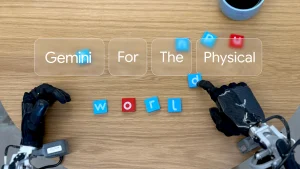Sairaj Iyer writes on the case for building native musical efficiencies through the development and use of modern technological marvels…
Much before the microphone was invented by Alexander Graham Bell, musicians remained a prized lot in king’s courts. From Miyan Tansen in Emperor Akbar’s court, or Varakavi Venkatasuri Swamigal in Shivajirao Bhonsle II of Tanjore’s court – musicians remained a prized lot.
Royal patronage to music is evident from the life of Maharaja Swati Thirunal Rama Varma who has to his credit over 400 compositions. And, in the sustenance provided by royal families to the industry such as the Wodeyar family’s affiliation with musicians and manufacturers of Indian tanpura and Veena. Royal patronage was soon replaced by commercial activities such as theatre, radio, movies, and independent albums. And, in the last two decades, flourishing digital avenues such as YouTube, SoundCloud, TikTok, Facebook, Spotify, and others have provided sustenance to music as an art-form.
While a lot has been said about the disruptive nature of technology in industrial sectors; changes in the past century in the music industry too have been brisk and consistent – magnetic tapes, vinyl, stereo speakers, cassettes, Sony Walkman, compact disc, Internet, Winamp, VLC, SoundCloud, Spotify, and recently AI. Although distribution and consumption channels are wide, India’s music industry could spin a new tune by leveraging technology.

Inside India’s Music Industry
Despite being clubbed as an entertainment category, the music industry was a Rs 5.62 lakh crore industry as of Aug’ 22 according to the Indian Music Industry (IMI) association. IMI, the second-oldest body devoted to music industry in the world also claims that the industry employed 14 million artists including brass bands artists, sound engineers, DJs, and even domestic manufacturers. For reference, the public sector is reported as employing 8 million while the financial services sector is 6 million in financial services.
On the demand side, there are multiple drivers – linguistic diversity such as Bhojpuri, Tamil, Telugu, Punjabi, Bengali; occasion such as weddings; demographics such as age; and even multiplicity of distribution channels. Music remains a most-watched category on YouTube, and which coincidentally is topped by an Indian Music channel – T-Series, followed by Zee Media Company (ranked #12) and ChuChuTV (ranked #18). ChuChuTv’s nursery rhymes not only remained unique but also infused a social aspect. In 2018, Vinoth Chander, the CEO, narrated in an Sify exclusive, how an increasing digital audience-base helped it build a large studio in under five years of establishing. ChuChuTv’s popularity was larger than even Shakira or Beyonce. In the world’s most populated country, music is not only an opportunity for artists to showcase their talent but also as a medium to promote everything from soap to films.

Beyond Distributive Inventions
Although contemporary discourse has centered around disruptions such as ChatGPT and Generative AI, rare use-cases have been attributed to the music industry and more precisely the Indian entertainment industry. Simple use-cases could be musical applications to tune instruments, or a desi music app the size of Spotify, or even building of complex musical algorithms.
Then there is the bigger use-case – building a large music model that conforms with Indian music standards such as the Carnatic or Hindustani base. There are over a dozen applications offering an interface to play the violin, but the options dry out when the search is for a Carnatic or a Hindustani classical style of violin. Indian Carnatic violin art-form has been endowed with stalwarts such as Lalgudi Jayaraman, MS Gopalakrishnan, TN Krishnan, L Subramaniam, Kunnakudi Vaidyanathan, N Rajam, Philomena Thumbochetty, Allaudin Khan, DK Datar, and Balabhaskar. L Vaidyanathan, L Subramaniam’s elder brother, gave India its much-loved Malgudi Days score (Thaana na Naana) while their youngest brother, L Shankar, was an accomplished double-violin player.
The finer intricacies of ragams, gamakams, varying moods, and multi-diverse lyrics is something that a western-world AI would find hard to emulate. Yes, indeed there’s apps that help create sound. But how many are these good at violin? And how good of those are good with a gamakam or a specific raga? Zero!
The opportunities also exist in music-education and uncharted territories such as music algorithms which find prevalence in apps such as Spotify. Claire Elise Boucher or artist Grimes recently lent her voice to Endel, an AI app that puts babies to sleep. In 2020, Grimes explained that she herself listened to these lullabies to find better sleep. India, the land of over 120 languages and nearly 20,000 dialects could well establish an app that offers lullabies in these languages.

Pitfalls of Technology
Although technology can usher in exciting opportunities, there are multiple risks too. Digital tools in recent past have fueled piracy concerns. IMI’s Aug’22 report claims the risk of piracy at 68% in India is higher than the world’s 30%.
While AI can be a viable and sophisticated tool to thwart pirates, it has its own set of risks. In Feb this year, Futuri announced the world’s first AI-driven radio content solution like ChatGPT. AI tools currently propose to offer a whole song based on user defined genre as an input. AI also presents risks such as homogenization induced loss of creativity which in turn could result in a loss of human connection. Then there are multiple ethical and linguistic biases.
There is no clear answer to how technology would enable the industry. Would it be the perfect connoisseur as yesteryear Kings or would it obliviate! As a learned instructor once said – see by ear if you truly wish to excel at music. Those who appreciate the finer nuances may clutch onto their Vinyl records or visit a live performance. For others, musical technology could be just a click away.
In case you missed:
- None Found









